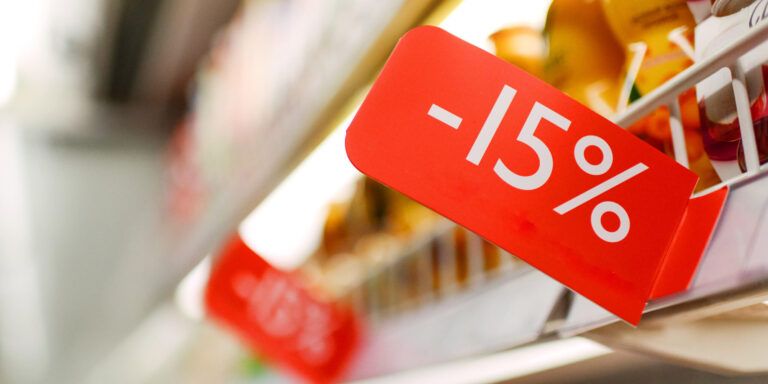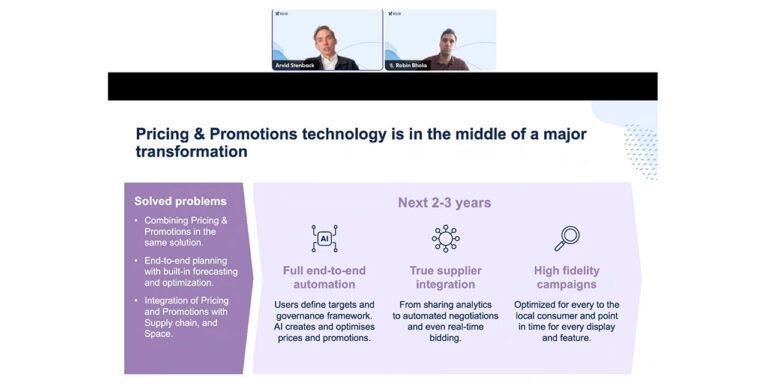As the holidays get closer, store promo locations must produce more than ever. Unfortunately, most retailers have a “Do what we did last year and hope for better” plan. That’s understandable: promotions are so critical that even small tweaks are risky.
Only here’s what’s ironic. Promos are almost always adjusted at the store. Store managers have a lot of leeway in placing items in their store. Especially with pallets and display outposts. Promotional quantities that don’t fit in their home locations might go on endcaps, in-aisle displays, vestibules, and even the back room. Which means that measuring a promotion’s effectiveness is difficult. Did the promotion not work because of the item selection? the price point? the competition? or store execution?
De-risking promotions requires data and testing. And execution is difficult to know without an audit. But since acquiring the promotional planning and analytics company Formulate, RELEX is thinking about making it easier. In a first (I’ve ever heard), they are exploring whether store operators could use their floorplans to mark where promotions are executed in their store. That would give headquarters immediate insight into understanding where customers find promo offers in each store.
We think that is a nifty way for promotional and space planning teams to improve their productivity measurements.
But there is another benefit: Reducing end-of-season clearance discounts. It’s natural for managers to want their store to “look good” everyday. But if that means Christmas locations are stocked until December 25, there will be expensive markdowns on December 26. If they don’t resupply and sell through goods, the store can look pretty bleak on December 24th.
But if headquarters can see where seasonal goods are in store, they can provide directions about how to consolidate and replace items to keep stores looking fresh throughout the season. In-aisle displays can fill a couple shelves of a shopped over endcap. Vestibule displays can be pulled back to a seasonal pod. Seasonal endcap inventory can move to checklane dump bins. Meanwhile, new seasonal goods or items that have high stock levels can fill in newly freed locations. Since headquarters creates the direction, there is more consistency in the stores, sales are more predictable, and store managers don’t have to resolve the headache on their own. End of season inventories can be “soft-landed,” and the stores still look good.
RELEX customers can use planogram automation to improve promotional support at the shelf. 80% of all promotional items are temporary price reductions (TPRs) at the shelf. Retailers who create flex space within planograms can feed promotions into the planogram automation tool. The automation can look forward at the expected promotional demand and redistribute space so that stores can stay in stock throughout the promo. Then a swift refresh of the shelf presentation can ensure that adjacencies make sense and the entire promotion is pulled together. How often does one of your vendors promote their line but all items are not adjacent in a planogram? With this automation practice, customers see everything on sale and there is enough space for stock to support a bigger purchase.
The truth is, retailers spend a lot of energy behind small promotions. They rarely yield the results both retailers and vendors need. If there were more automations to support promotions, they would be easier to execute and drive more sales. More sales = happier customers.
About Flora Delaney
Flora works with retailers around the world helping them re-discover and focus on what makes them successful. As president of Delaney Consulting, she leads a practice that focuses on merchandising, space planning and category management.
Her past clients include PetSmart, Dell Computer, Whole Foods, Target, Petco, Jack Links, Advance Auto Parts, The Good Guys (Australia) AS Watsons (Hong Kong). Previous experience: officer positions in visual merchandising and buying while at Best Buy, Ahold DelHaize USA, ACNielsen, Kraft and Unilever.
Flora’s book Retail The Second-Oldest Profession outlines the 7 Timeless Principles of retail that are true for every retailer in every country and channel. It contains clear actions to make business improvements during your very next shift and is available wherever business books are sold.
Flora’s book “Retail: the Second-Oldest Profession“ is available here.
Flora will be joining RELEX at NRF 2023. If you’d like to request a meeting click here.




